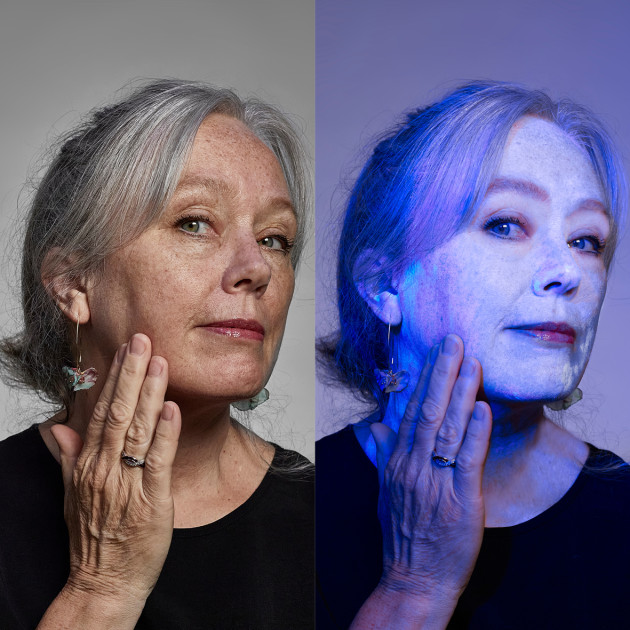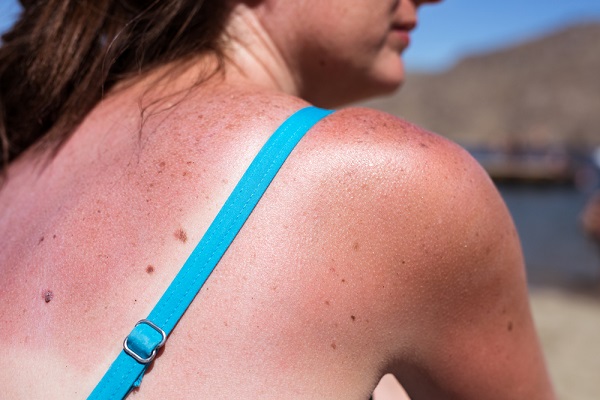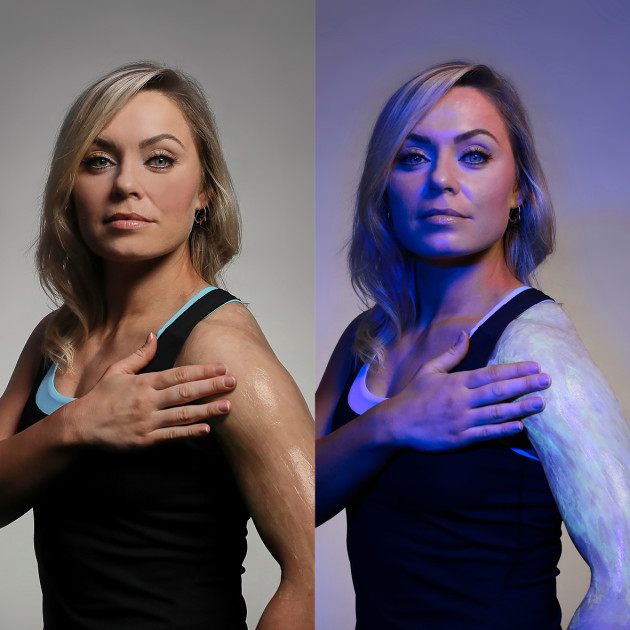
A new skin cancer treatment could be available by November
A new treatment for skin cancer replacing chemotherapy with calcium could be available later this year thanks to ground-breaking new research.
Breakthrough Cancer Research (Breakthrough) announced the news as they launched a national awareness campaign ‘Let’s get to 100% together’, which warns about the importance of protecting skin from UV damage 100% of the time. In Ireland the number of skin cancer cases have doubled in the last decade and continue to rise. We have the highest mortality rate from melanoma in Europe.
The charity is also highlighting the urgent need to raise funds for new treatment options, in a strive to achieve 100% survival from the disease.

Together with TV & radio broadcaster, Ireland’s Fittest Family coach, and former All- Ireland winning camogie captain Anna Geary and Olympian & well-being advocate David Gillick, Breakthrough is stressing the particular importance of improving skin cancer prevention behaviours in sporty and outdoorsy people, who can be complacent, especially now as the country re-opens for staycations and people enjoy more time outdoors.
Breakthrough is calling on people to increase their UV awareness and be vigilant when applying sunscreen, to ensure they achieve 100% coverage. Using UV technology, the charity is highlighting the hard to reach and often missed areas that result in patch burning, such as the back of the neck, ‘widows peak’, tip of the nose, ears and the lower legs.
They have also stressed that sunscreen should be the last line of defence against skin cancer, as SunSmart behaviour starts with staying in the shade, covering up, and wearing sunglasses and hats.

A national survey conducted by Breakthrough of 677 adults found that 93% of adults have burnt in the sun, while 73% got patch burned despite applying sunscreen. A further 72% do not know the UV index at which they should wear sunscreen. Only 34% wear sunscreen on their face every day, 48% when it is sunny, with just 0.1% wearing it when cloudy.
In addition to raising awareness about the need for 100% protection against UV, Breakthrough continues to fund pioneering research for innovative new treatments that help to improve the survival outcomes for those who have already been diagnosed. The charity gave the green light to an exciting new skin cancer research project this week. The novel chemo-free non surgical treatment for skin cancers uses calcium instead of chemotherapy and could be available for patients in a clinical trial, initially in Cork, as early as November. The hope is that this non-toxic but highly effective treatment can be delivered to outpatients.
However, the charity needs to raise €100k to continue to fund this new life-saving research, and are calling on donations from the public to help more people to survive sooner. You can donate directly at breakthroughcancerresearch.ie.

Commenting on the campaign and new research, Orla Dolan, CEO of Breakthrough Cancer Research, said “We’re calling on the public to do everything they can to protect themselves properly, while we work on new treatments.”
“Sunscreen should be your last line of defence – it’s important to stay out of the sun and cover up when outdoors particularly between 11-3 every day from April to September when the UV index is over 3. We have seen some very nasty cases of basal cell carcinomas and melanoma in these missed areas, like the tip of the nose, the top of the ears, and the lower legs.
She continued, "We are also putting a focus on the most at risk groups like sporty and outdoorsy people. You might think you're being healthy when you're outdoors and being active but you're putting yourself in danger if you don't cover up and have sunscreen applied correctly. Children and those with pale or fair skin and blue eyes are also high risk and need to take extra precaution. It has never been more important to stay safe while staying healthy."
"Breakthrough is helping improve the survival outcomes for those already diagnosed. We’re working with an amazing team of scientists and clinicians, on ground-breaking new treatments for skin cancers as we strive for 100% survival for all cancers."
“We are very excited to give the green light to one project this week that will replace chemotherapy treatment with calcium, but we need help from the public to raise €100k to bring it to clinical trial later this year."

“Together, through better prevention and new treatments, we can achieve 100% survival, so let’s get to 100% and €100k together”.
Mr James Clover, Consultant Plastic Surgeon & Clinical lead for Electrochemotherapy in University College Cork and Cork University Hospital, who is leading the research to move treatments to the next stage by replacing chemo with calcium, said, “We have been extremely fortunate to have been able to offer patients electrochemotherapy, through the support of Breakthrough Cancer Research, here in Ireland for over 10 years now. New treatments like these do not happen overnight and must go through a robust testing process to ensure it is both safe and effective before it ever reaches a patient. We are sincerely grateful for the support of the public and look forward to the next stages of this research, less invasive ways to help patients with a variety of skin cancers.”
Skin cancer is the most common form of cancer in Ireland with the highest mortality rate for melanoma in Europe. Currently more than 11,000 people are diagnosed with the disease every year. Most (91%) have non-melanoma skin cancers (NMSC), which have an almost 100% 5 year survival rate, while more than 1000 people (9%) are diagnosed with the more invasive form, melanoma, which has a 90% 5 year survival rate overall. However, this is less than 60% for those diagnosed with stage III and less than 20% for stage IV melanoma.
Breakthrough is striving for 100% survival through better prevention and new treatments. For more on how you can protect yourself and others, and to donate to the new life-changing treatment for skin cancer to help achieve 100% survival, go to: www.breakthroughcancerresearch.ie/100percent






